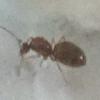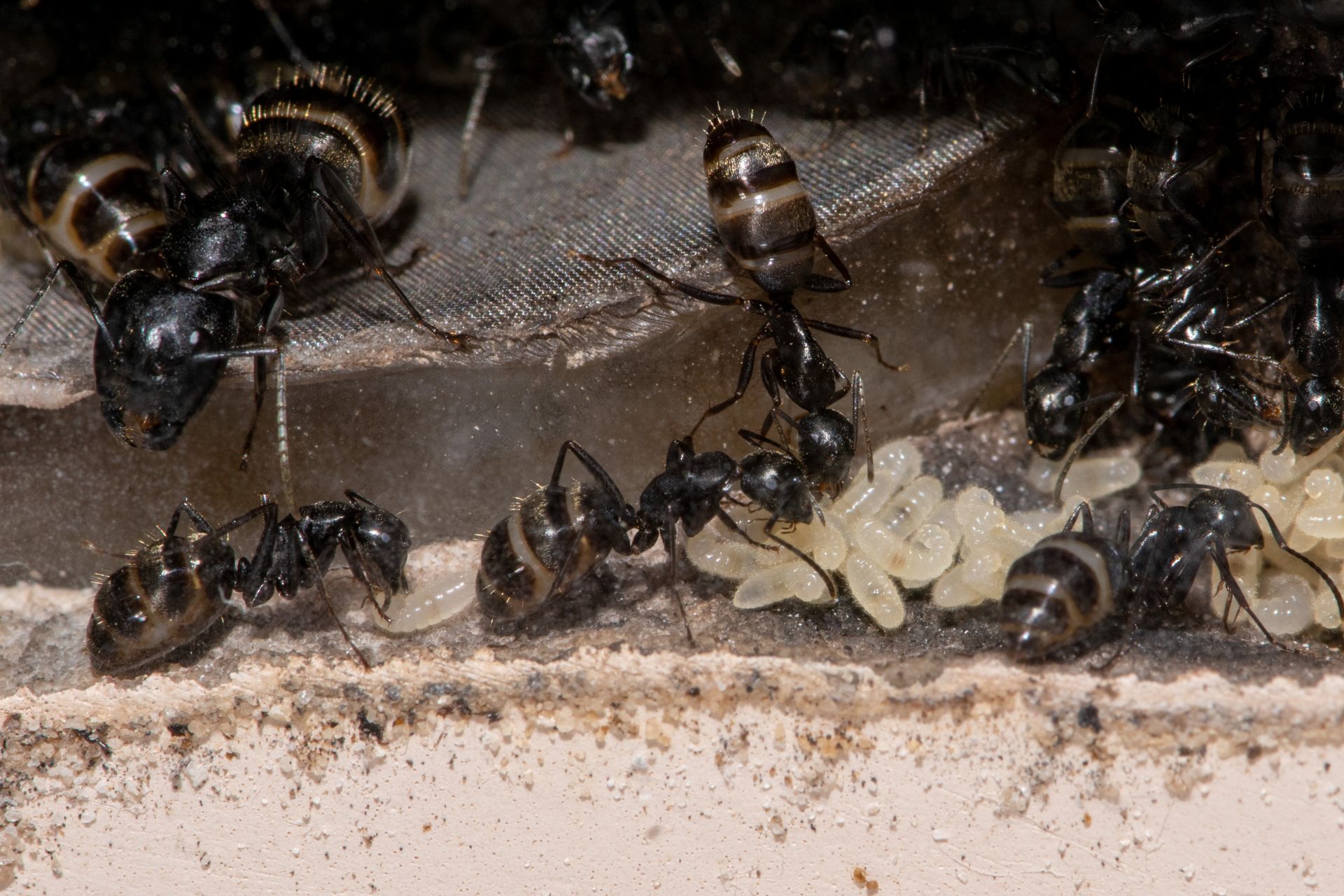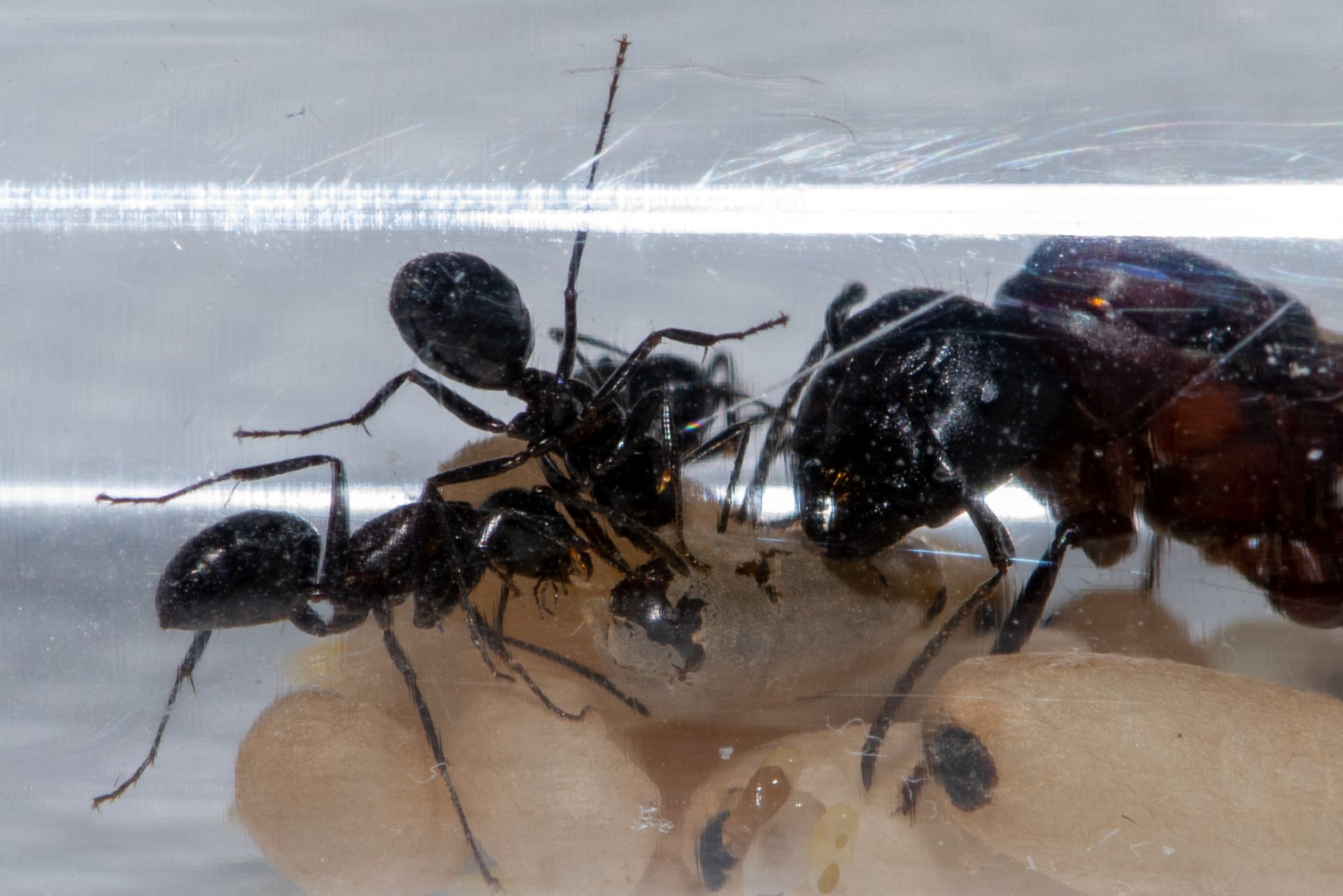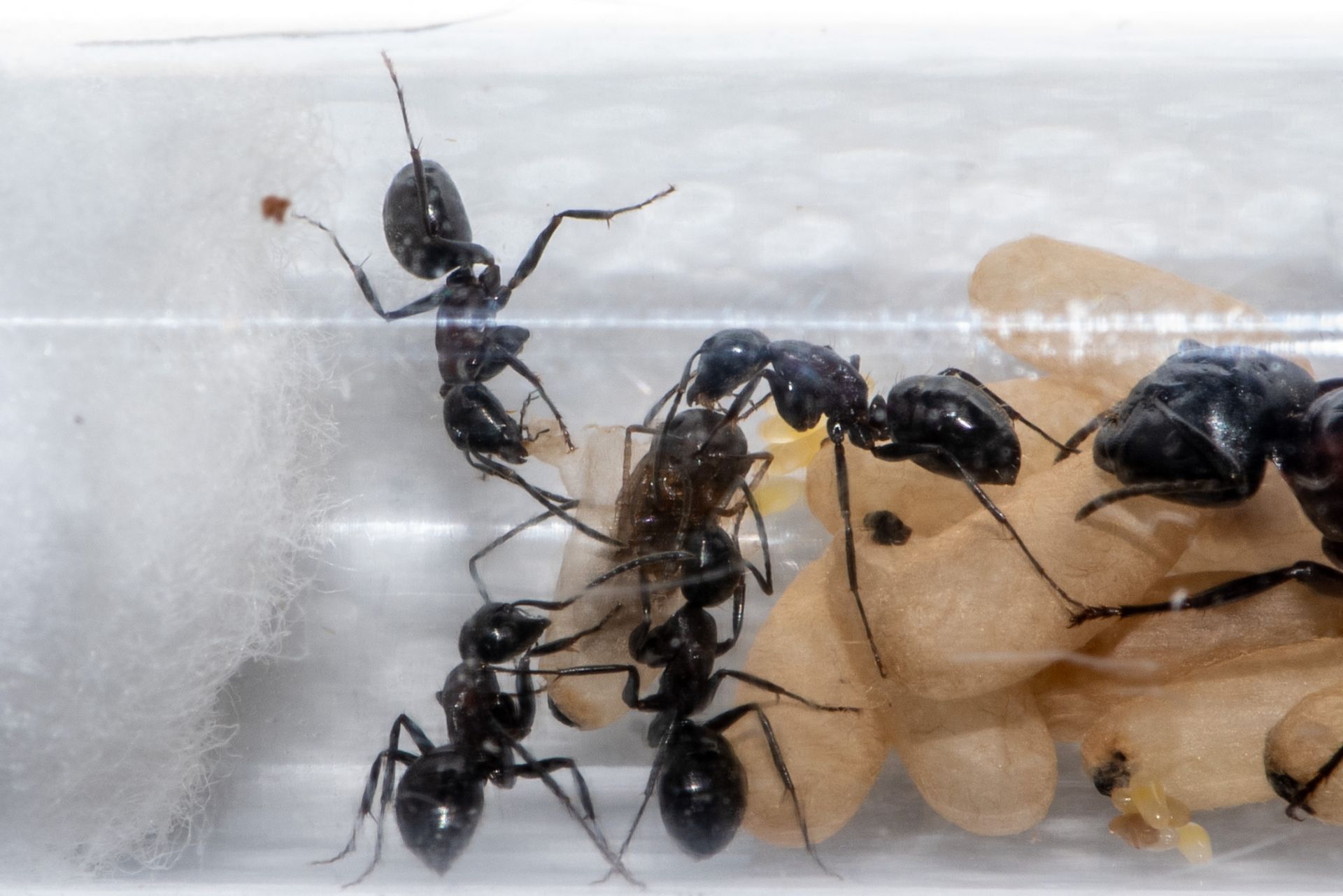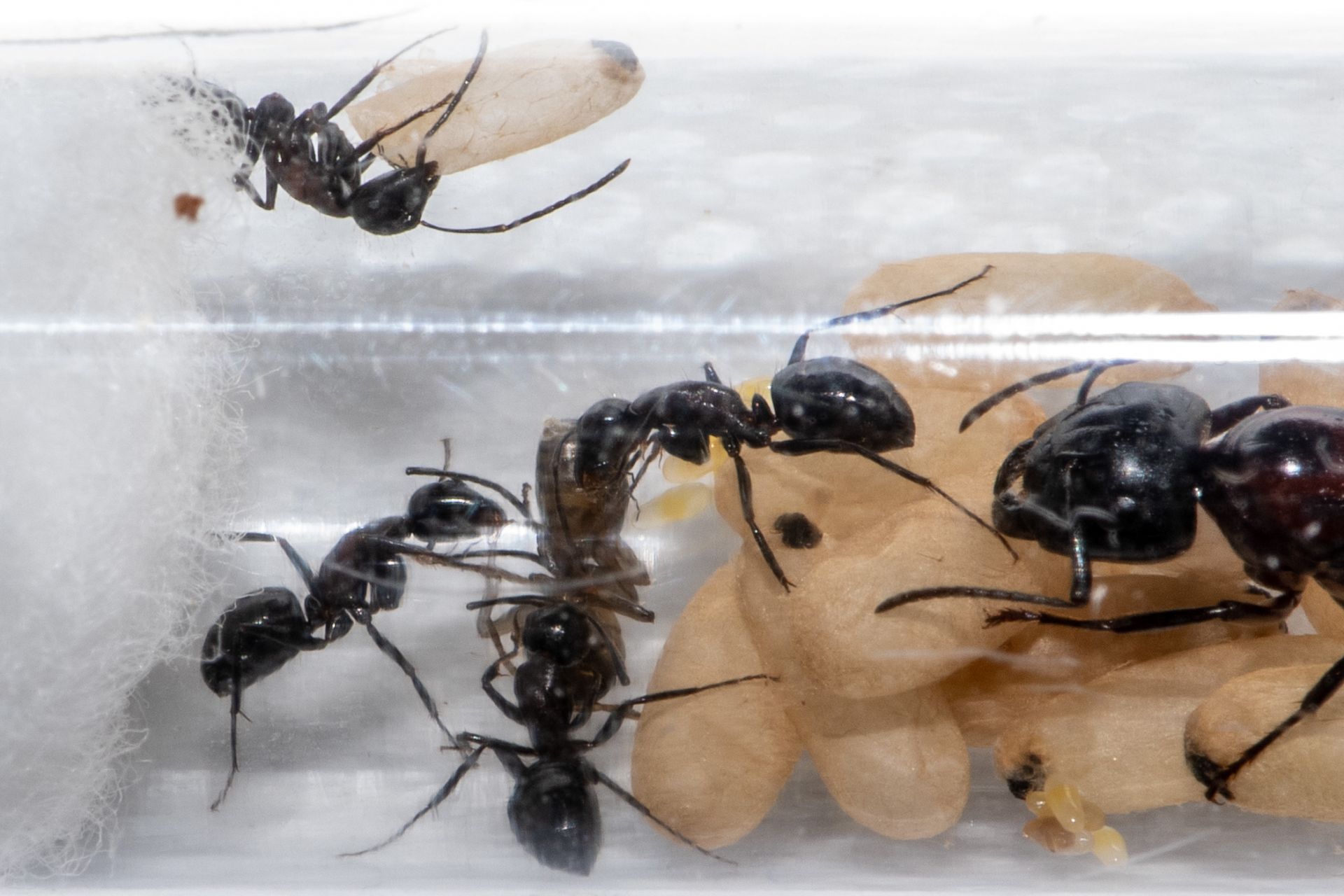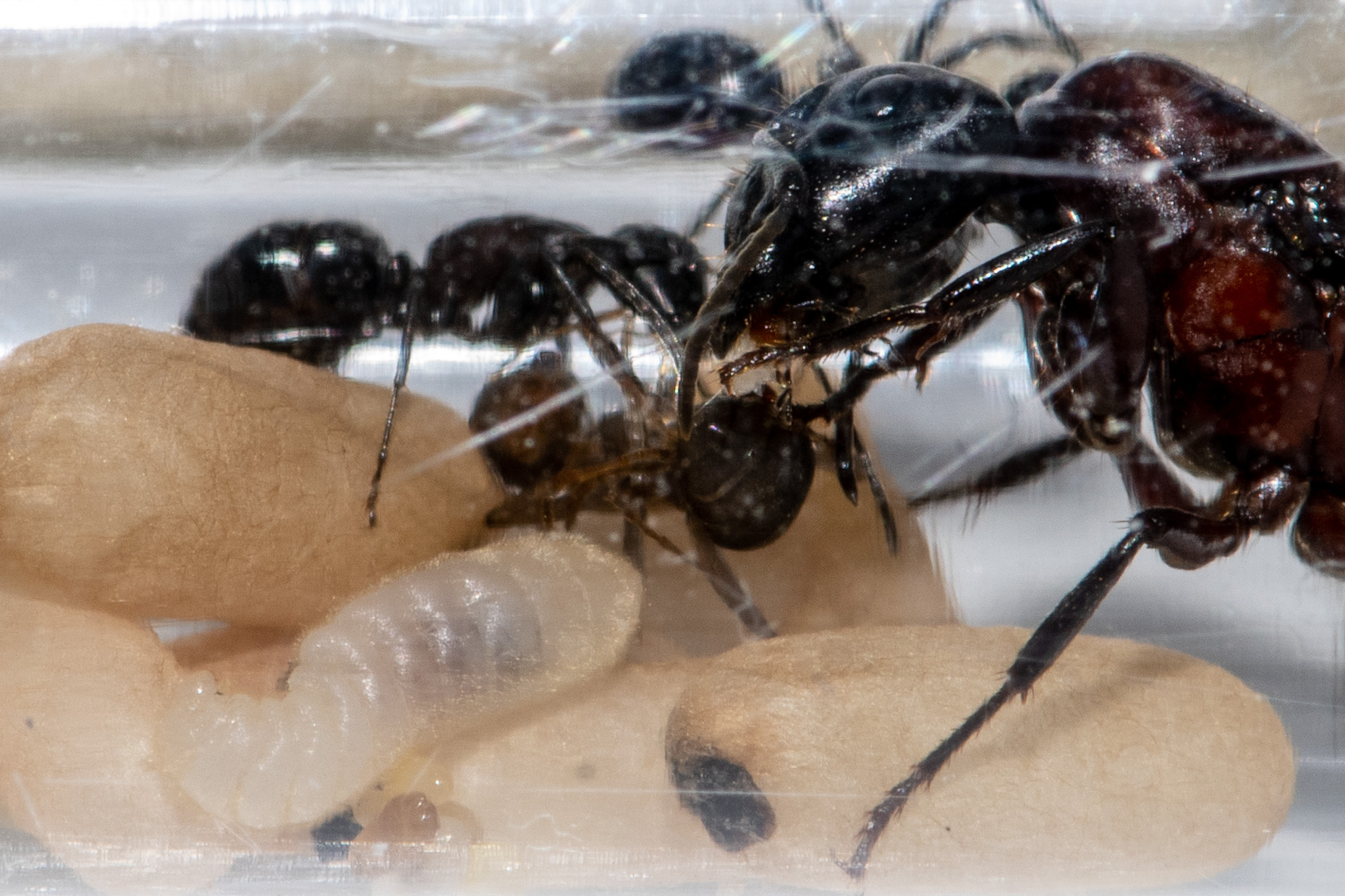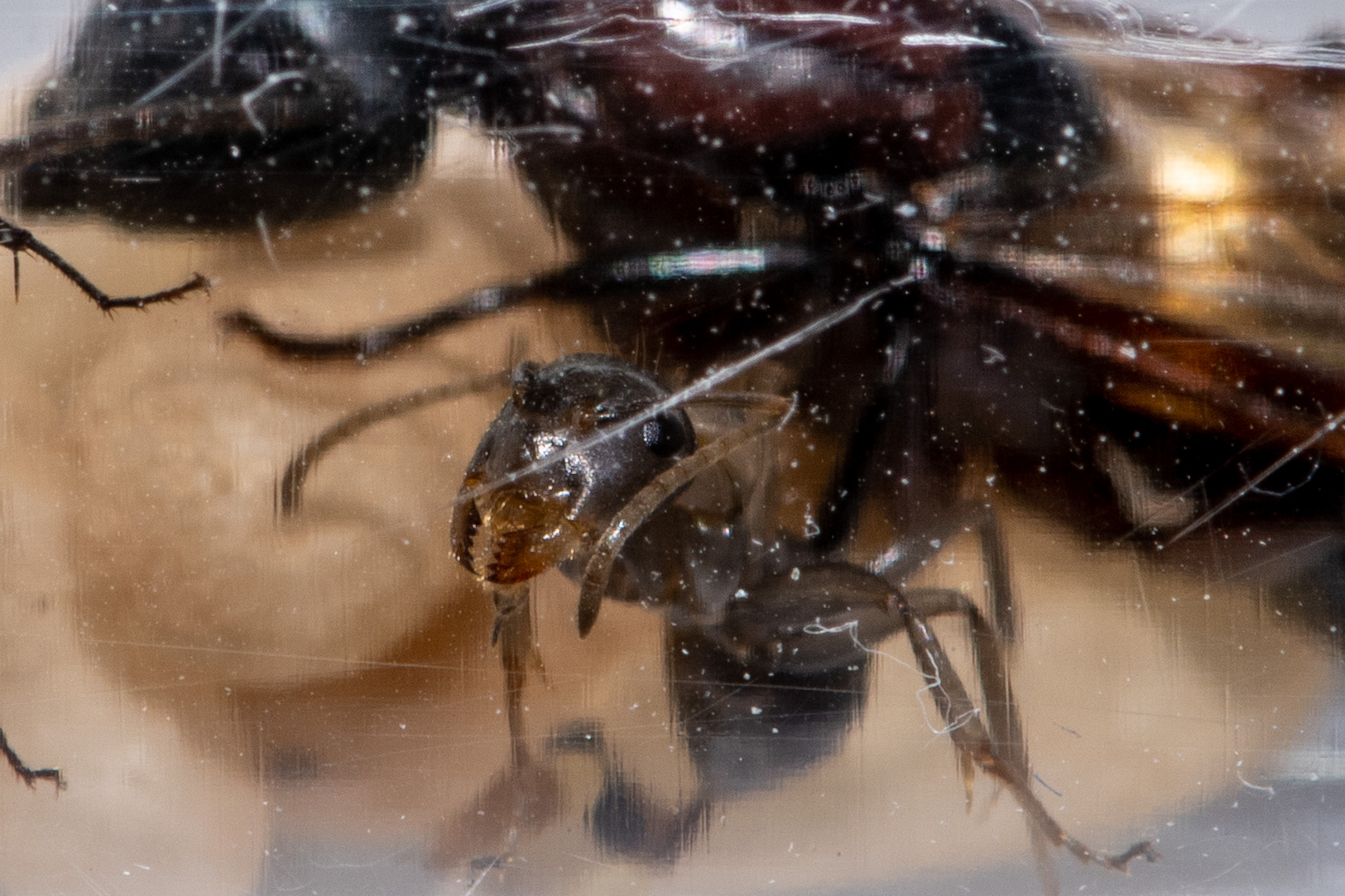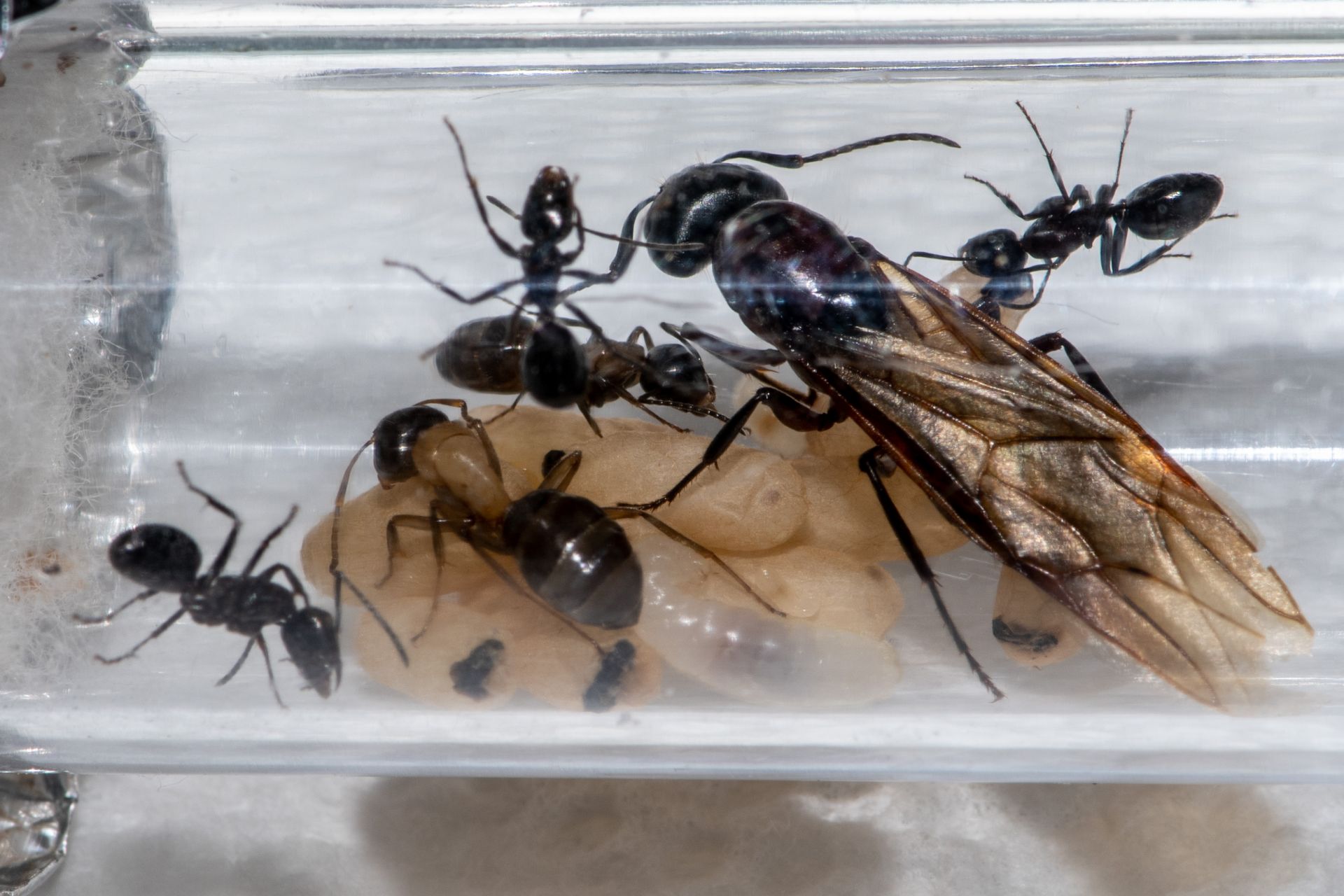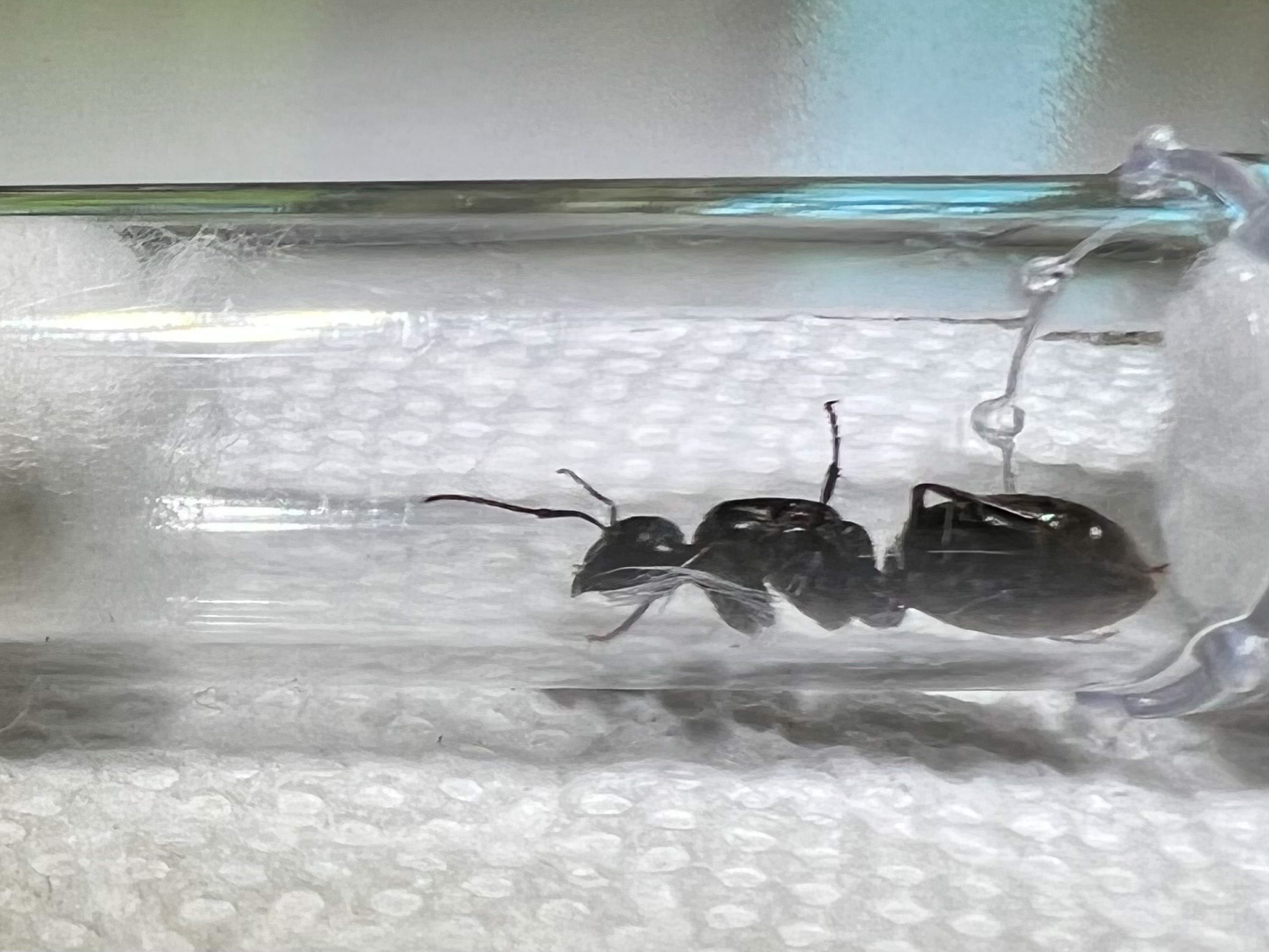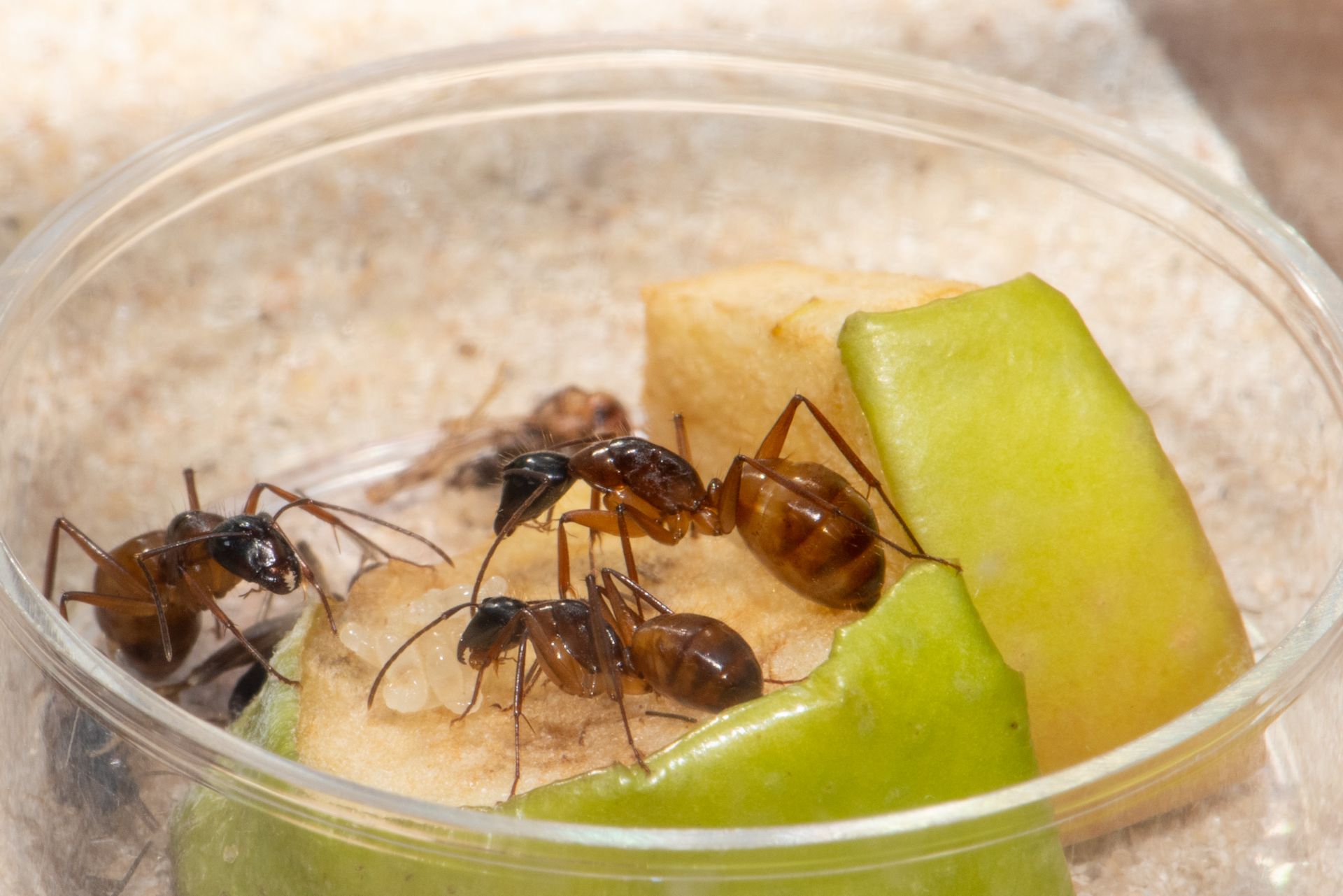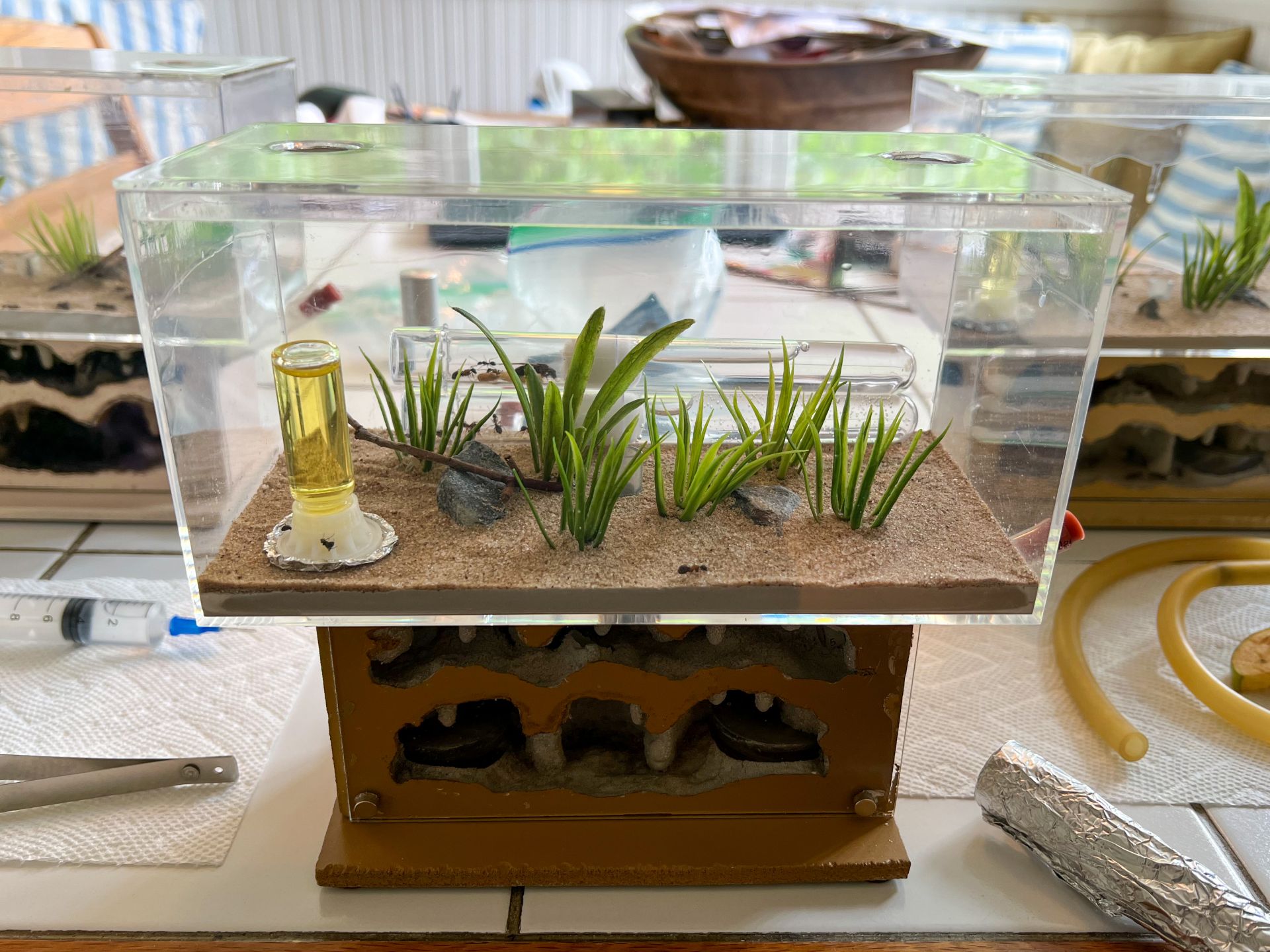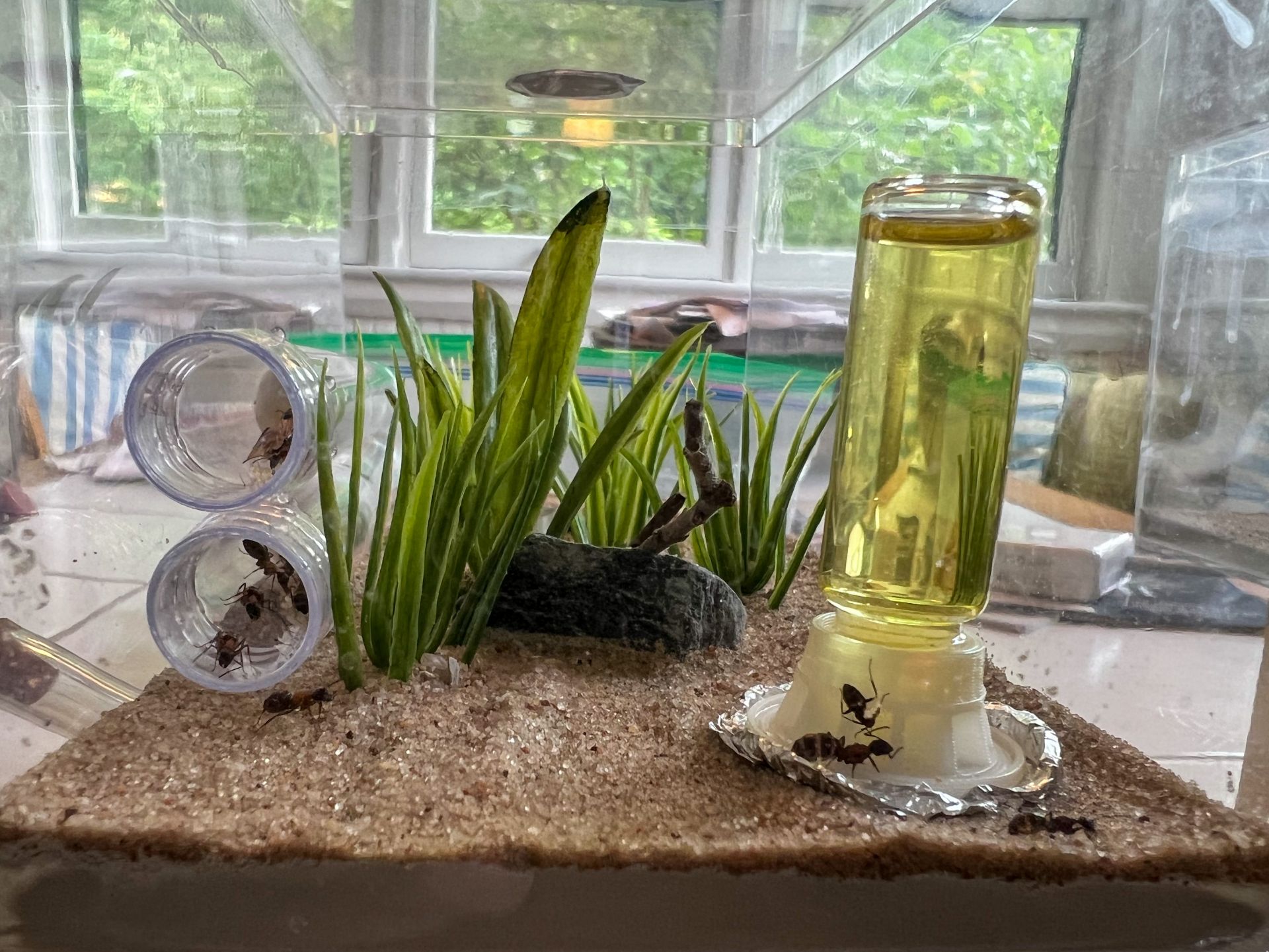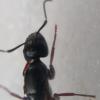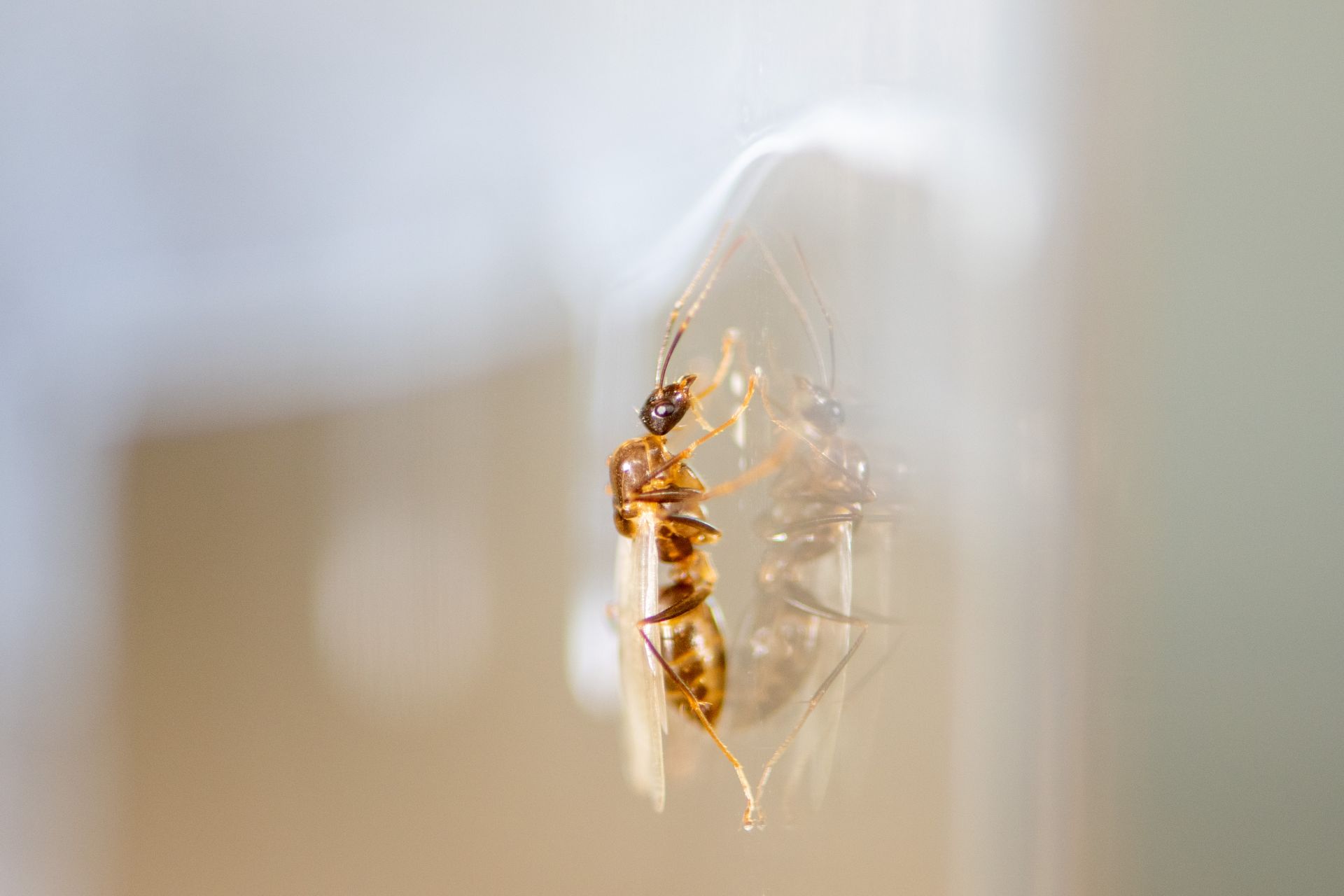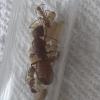I was feeding my C. americanus today and noticed this behavior from a foraging worker. It appeared to be in response to a frozen/flash-boiled Dubia roach. While the feeders were quite dead, I was surprised at the behavior which persisted over a few minutes. It occurred whenever the worker brushed against the antenna or leg of the Dubia. I looked up aggressive behavior and threat posture in Hölldobler & Wilson’s The Ants along with Hölldobler & Wilson’s Journey to the Ants. The posture they described was standing tall, with open mandibles and a forward tilted gaster. She’s standing tall with open mandibles but doesn’t have the gaster position. The lunge certainly seems aggressive. Still curious about how a dead feeder insect triggered a threat behavior.
https://share.icloud...YubTbmPr2YU8JIA





